Parijatha Nyctanthes arbor-tristis: Benefits, Remedies, Research, Side Effects
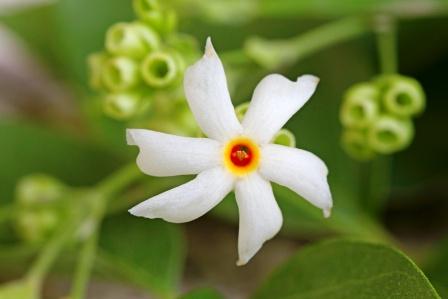
Parijatha- Nyctanthes arbor-tristis is a plant mentioned in the ayurvedic pharmacopeia for the treatment of alopecia, sciatica, constipation, piles, intestinal worms and poisoning.
Latin name- Nyctanthes arbor- tristis Linn.
Family- Oleaceae (Parijata kula)
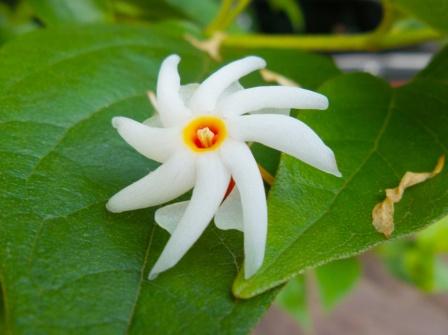
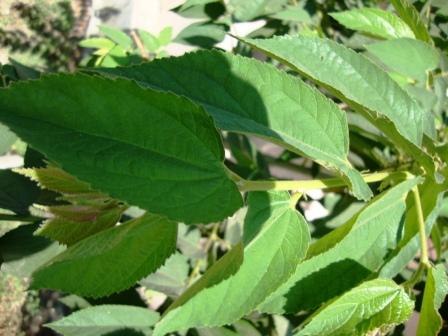
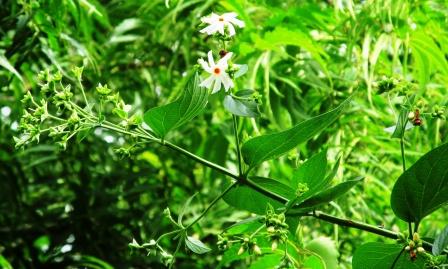
Table of Contents
Vernacular names
Names in different languages:
Hindi name-Har singar
English name- Night jasmine or Coral jasmine
Bengali name- Shefalika, Shivuli
Guajarati name- Harshanagar
Kannada name- Parijatha
Marathi name- Parijath
Telugu name- Parijatamu
Tamil name- Majjapu
Sanskrit synonyms
Vatari- Reduces vata dosha
Shuklangi- The flowers are white colored
Sephalika, Shefalika – Honey bees like the plant so they are found more in this plant
Ragapushpi – Corolla tube of its flower is orange coloured
Kharapatraka – Leaves are rough to touch
Aparajitha, Vijaya
Classical categorization
Raja Nighantu- Shatahvadi varga
Scientific classification
Kingdom: Plantae
Order: Lamiales
Family: Oleaceae
Genus: Nyctanthes
Species: N. arbor-tristis
Morphology
Parijatha is a big shrub or small tree growing to a height of 20-25 feet and found all over India. The leaves have small hairs on the underside. The flowers are fragrant, with a five- to eight-lobed white corolla with an orange-red center; they are produced in clusters of two to seven together, with individual flowers opening at dusk and finishing at dawn. The fruit is a flat brown heart-shaped to round capsule 2 cm diameter, with two sections each containing a single seed. The flowers are seen immediately after the rainy season and the fruits are seen in the spring.
Properties, part used, dosage
Night-flowering Jasmine: medicinal properties:
Rasa (Taste) – Tikta (Bitter)
Guna (Qualities) – Laghu (Light for digestion), Ruksha (Dry in nature)
Vipaka – Katu (Undergoes Pungent taste after digestion)
Veerya (Potency) – Ushna (Hot)
Karma (Actions) – Kaphavata shamaka (reduces vitiated kapha and vata dosha)
Pharmacological actions – CNS depressants, Hypotensive, Antipyretic, Laxative, Antispasmodic

Part used- Leaf, Bark
Dosage-
Powder: 1-3 g
Fresh juice- 10-20 m
Decoction – 50 -100 ml
Chemical constituents
Nyctanthes arbor- tristis chemical constituents:
The seeds and the leaves contain iridoid glycosides. The leaf contains mannitol, beta- amyrin,, beta- sitosterol, hentriacontane, benzoic acid, astragalin, nicotiflorin, oleanolic acid, nyctanthic acid, friedelin and lupeol. The seeds of the plant contain a polysaccharide glucomannan.
Uses, Sanskrit verse
Medicinal uses of Uses of Parijata – Nyctanthes arbor- tristis:
- The paste of the seeds is applied over the area affected with alopecia.
- The fresh juice of the leaf of Nyctanthes arbor- tristis is given in a dose of 5 – 10 ml to treat sciatica.
- The fresh juice of the plant is given in cases of constipation, intestinal worms, hepatomegaly and piles in a dose of 10-15 ml.
- In cases of asthma and cough, the powder of dried leaf or bark of Nyctanthes arbor- tristis is given with betel leaf juice in a dose of 2-3 g.
- The paste of the bark or leaf is applied over the area affected with eczema and ringworm.
- In cases of snake poisoning, the juice of the leaf is administered.
- The cold infusion of the leaf is given to treat difficulty in micturition.
- The flowers are used to prepare perfumes and scents after distillation.
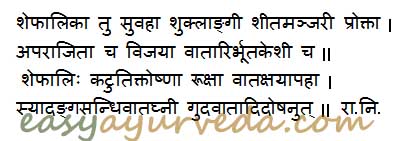
Parjiatha for Nipah virus:
There are many rumored benefits of Parijata in curing Nipah virus. It is useful in reducing the symptoms of Nipah virus infection. But a complete cure just with it cannot be guaranteed.
Adverse effects
Adverse effects: No known adverse effect is known or reported by the normal use of Parijatha.
Interaction with medicines, supplements
Can this be used while taking Homeopathic medicine?
Yes. This product does not react with homeopathic medicine.
Can this medicine be continued while taking supplements like multivitamin tablets, Omega 3 fatty acids etc?
Yes. Generally, this product goes well with most dietary supplements. However, if you are taking more than one product per day, please consult your doctor for an opinion.
With western
medicines
Seek your
doctor’s advice if you are taking this product along with other western
(allopathic / modern) medicines. Some Ayurvedic herbs can interact with modern
medicine.
If both Ayurvedic and allopathic medicines are advised together, then it is
best to take Allopathic medicine first, wait for 30 minutes and then take the
Ayurvedic medicine.
Ayurvedic medicines
Ayurvedic medicines containing Parijatha as ingredient:
Manasamitra vatakam: Manasamitra Vatakam is a tablet, used in Ayurvedic treatment of psychiatric conditions, to improve intelligence, speech problems, used in children to improve brain functions, memory and concentration, in diseases like autism. It is also used to treat epilepsy, seizures and mania.
Bala taila: Bala Tel is Ayurvedic oil, used in Ayurvedic treatment of Vata diseases, bloating, wound, emaciation, spleen diseases, epilepsy, asthma, vomiting, cough, cold, asthma, wound, emaciation etc. It is used both externally and orally.
Arthrella ointment: Arthrella Ointment is a proprietary Ayurvedic medicine used in the treatment of rheumatic disorders. It is a potent anti-inflammatory and analgesic formulation.
Step capsule: Step Capsule is a proprietary Ayurvedic medicine used against respiratory tract infections.
Ashwagandharishta: It is a liquid formulation useful against general debility, piles, low digestive power, loss of memory etc.
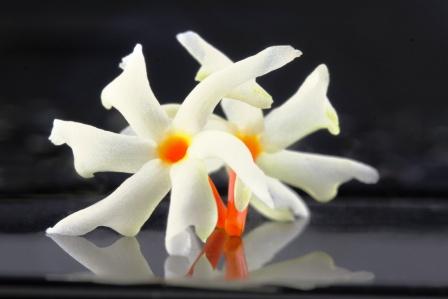
Research
Research articles about Nyctanthes arbor-tristis:
Anti- inflammatory and Anti- oxidant activity: Anti–inflammatory and Antioxidant properties of Nyctanthes arbor-tristis L. (Oleaceae) seeds extracted with Hexane, ethyl acetate and methanol revealed that ethyl acetate (Ny-El) extract showed potent effect than hexane and methanol extracts. The total phenolic content of Ny-El extract was 206.81 ± 1.11 mg of catechol equivalents/g extract. Ny-El extract showed great scavenging activity on 2, 2-diphenyl-picrylhydrazyl (DPPH) (IC50 459.91±1.40 µg/mL), hydroxyl (IC50 363.32±1.58 µg/mL), nitric oxide (IC50 545.03 ± 1.69 µg/mL) and superoxide (IC50 338.82 ±1.72 µg/mL) radicals, as well as had high reducing power.
Anti- arthritic action: The plant was evaluated for acute toxicity studies at two different dose levels and it did not show any toxic or deleterious effects indicating low toxicity of the extracts even at high doses. In gouty arthritis a significant reduction in legged gait was observed as compared to control group whereas in poly arthritis model complete control was noticed in injected as well as uninjected paw.
Hepato protective action: The aim of the present study was to evaluate the alcoholic and aqueous extracts of the leaves of Nyctanthes arbor-tristis for hepatoprotective effect against carbon tetrachloride-induced liver damage in rats. Administration of alcoholic and aqueous extracts of the leaves of Nyctanthes arbor-tristis protect the liver from toxic effects of carbon tetrachloride by reducing the elevated levels of Serum glutamate pyruvate transaminase, Serum glutamate oxaloacetate transaminase and serum bilirubin (total and direct). Results revealed that both the alcoholic and aqueous extracts showed significant hepatoprotective activity by reducing the elevated levels of biochemical parameters at a dose of 500 mg/kg body weight.
Author: Dr.B.K.Prashanth M.D (Ayu), Ph.D
E mail: [email protected]
Controversy
Sephalika is used as a synonym for Harenu or Renuka because of similarity in foliage and common use in vataroa and vishavikara.
Parijata is used as a synonym for other herbs such as –
Paribhadraka (Erythrina indica)
Rohitaka (Tecoma undulata)
Tejovati (Zanthoxylum armatum)
Nirgundi (Vitex nigundo)
Sthanika Karma (Systemic Action)
External use
Anti microbial, good for hair growth. Seed paste is indicated in Alopecia.
Internal administration
Nervous system – Indicated in inflammatory conditions of the nervous system, relieve pain and inflammation. Beneficial in Sciatica.
Digestive System – Carminative, liver stimulant, Ant helminthic. Facilitate movement of vata dosha in proper direction, Leaf juice is indicated in loss of appetite, constipation, low digestive fire, Liver disorders, Diseases of pitta origin, Helminthiasis etc.
Circulatory System – it helps for blood purification.
Excretory system – Indicated in Dysuria
Respiratory system – Pacifies kapha dosha. Leaf juice of parijata mixed with betel leaf juice can be given in cough, Asthma etc.
Satmikarana –Ant poisonous (Leaf juice is indicated in Snake poisoning as per textual references)
Reproductive system – Root preparations are indicated in Dysmenorrhea, Amenorrhea etc.
Tapakrama – Indicated in fever (Jirna jvara)











23 comments
Ronald
When the fresh flowers are soaked in water overnight it tints the water yellow orange, is there any known ayurvedic medicinal benefit in drinking the water?
I have read the yellow color is the same chemical in saffron.
Dr J V Hebbar MD(Ayu)Author
The water would contains the benefits of flower – bitter, light to digest, pungent Vipaka, hot and balances Kapha and Vata Dosha. Useful in cough, cold, rheumatoid arthritis, fever.
Ram vemuri
Sir is it useful for neck&back pain?is it use in raw condition?
Jain goud
How to use Nyctanthes arbor-tristis for scaitica…please say me the procedure for its usage
Je Nette
Namaste 🙂
I just want to know what is the name of this plant in the Philippines? Thak you
Dr J V Hebbar MD(Ayu)Author
I have not come across its Philippines name.
Santhosh salimath
Can we dry the leaves & use d powder for joint pain or knee pain
Anita
Plz tell me, if we take leaf paste of paarijaat boiled in water and taking it as a medicine. Does it have any side effects?
Dr J V Hebbar MD(Ayu)Author
No.
Anita
I have read its use for arthritis.so little worried about side effects. Plz reply
Dr J V Hebbar MD(Ayu)Author
Hi, if not this, there are many other medicines for arthritis. Please consult an Ayurveda doctor directly.
KP Vidyashankar
Recently I have received some info that the leaves made into a decoction in the usual ayurvedic way is good for the NIPAH virus. Decoction is to be taken with little lime juice and pepper powder. Any TRUTH in this. I know the uses of Giloy – amritvalli for virus immunity, but this is really new.
chiranjeevi
does it cure old knee pains
Kavya
I am a BAMS student..
I heard that parijatha is having an antiviral property..is it true?
Also it is explained in a whatsapp post that it can be used as a decoction along with pepper and lemon to prevent nipah virus infection.
I want to know whether it is a fact or not.
Dr J V Hebbar MD(Ayu)Author
Hi, it has anti viral property. But it is not potent enough to kill Nipah virus.
Dr J V Hebbar MD(Ayu)Author
Not very effective.
naveen
does it have any side effects ?
Dr J V Hebbar MD(Ayu)Author
No side effects with normal usage.
A Ramanan
In my garden, I found 4 and eight petals only one or two out of 300 flowers. Any information about it?
What does one do with dried Parijatak flowers?
Parul Nigam
Do you have any dosage form of parijat leaves in the form of gel. transdermal patch? If yes please let me know
Dr J V Hebbar MD(Ayu)Author
As per Ayurveda, 4 – 5 leaves are used for external application but I do not know the dose for transdermal patch.
Ronald
I have found up to 10 petals from my tree, photo of flower available.
The orange of the flower stem is the same chemical coloring saffron.
I also use the fresh twigs for tooth brush.
sandeep
can we make sharbat from parijat flowers?. if yes, please provide its benefits